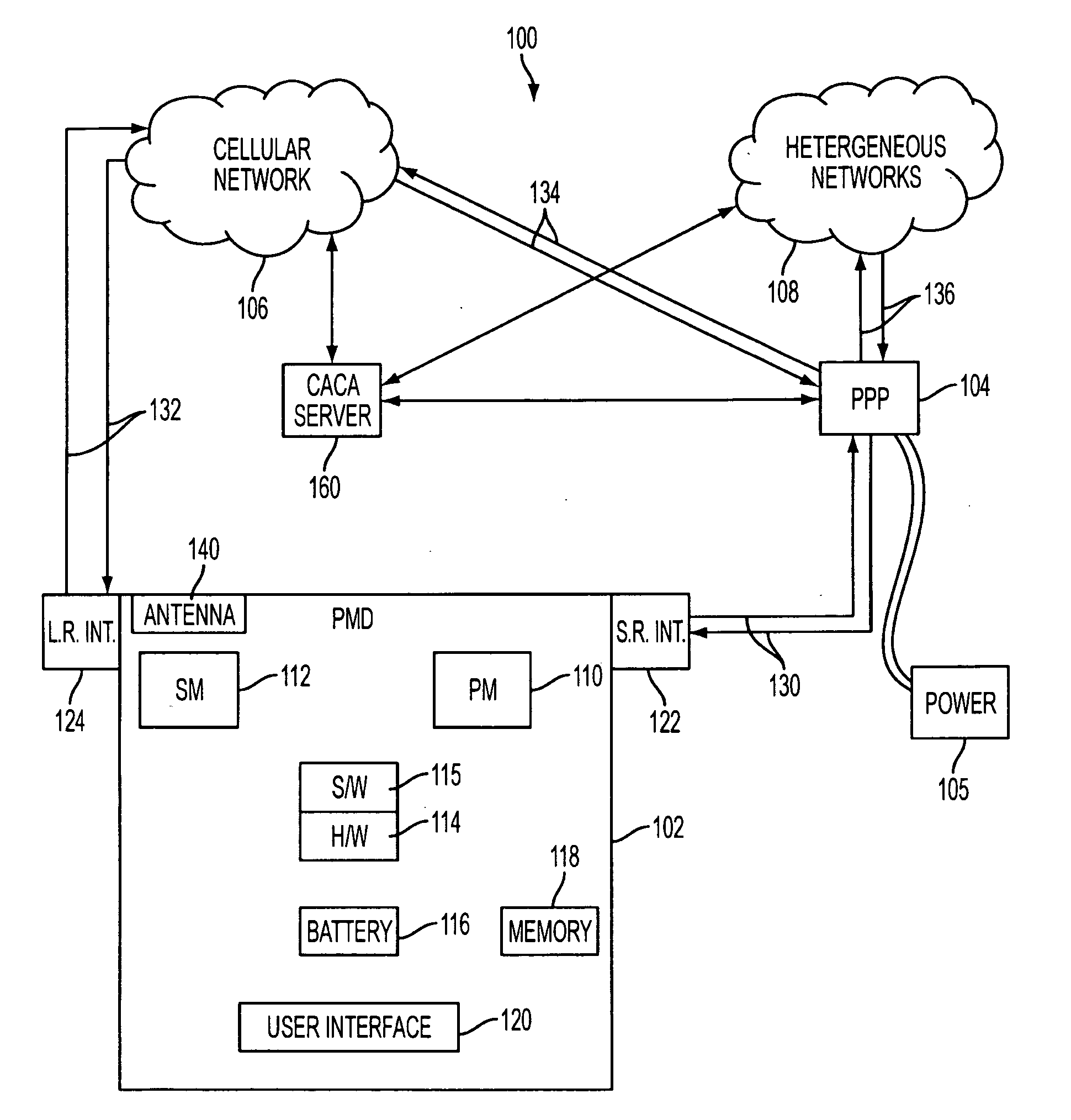Multi-interface parsable mobile devices (PMD) for energy conservation and services enhancement
a mobile device and multi-interface technology, applied in the field of multi-interface parsing mobile devices for energy conservation and services enhancement, can solve the problems of limited battery life affecting a mobile device, placement of a large, high-capacity battery or power supply, and insufficient rate to keep pace with technological advances and the burden of placing demands, so as to achieve the effect of reducing battery li
- Summary
- Abstract
- Description
- Claims
- Application Information
AI Technical Summary
Benefits of technology
Problems solved by technology
Method used
Image
Examples
Embodiment Construction
[0037]Reference will now be made in detail to the preferred embodiments of the present invention. Examples of the preferred embodiments are illustrated in the accompanying drawings.
[0038]FIG. 1 depicts a communications environment 100 for mobile communications according to the disclosed embodiments. Communications environment 100 may include cellular network 106 and heterogeneous networks 108. Communications environment 100 facilitates the sending and delivery of information using various protocols, platforms and the like. Preferably, these protocols, platforms and the like support wireless communications.
[0039]Parsed mobile device, or PMD, 102 may exchange information and data within communications environment 100. PMD 102 is a multi-interface parsed mobile device that incorporates reduced power consumption and other restrictions. PMD 102, automatically adapts to two different modes of operation to communicate within communications environment 100. The two modes of operation are pe...
PUM
 Login to View More
Login to View More Abstract
Description
Claims
Application Information
 Login to View More
Login to View More - R&D
- Intellectual Property
- Life Sciences
- Materials
- Tech Scout
- Unparalleled Data Quality
- Higher Quality Content
- 60% Fewer Hallucinations
Browse by: Latest US Patents, China's latest patents, Technical Efficacy Thesaurus, Application Domain, Technology Topic, Popular Technical Reports.
© 2025 PatSnap. All rights reserved.Legal|Privacy policy|Modern Slavery Act Transparency Statement|Sitemap|About US| Contact US: help@patsnap.com



